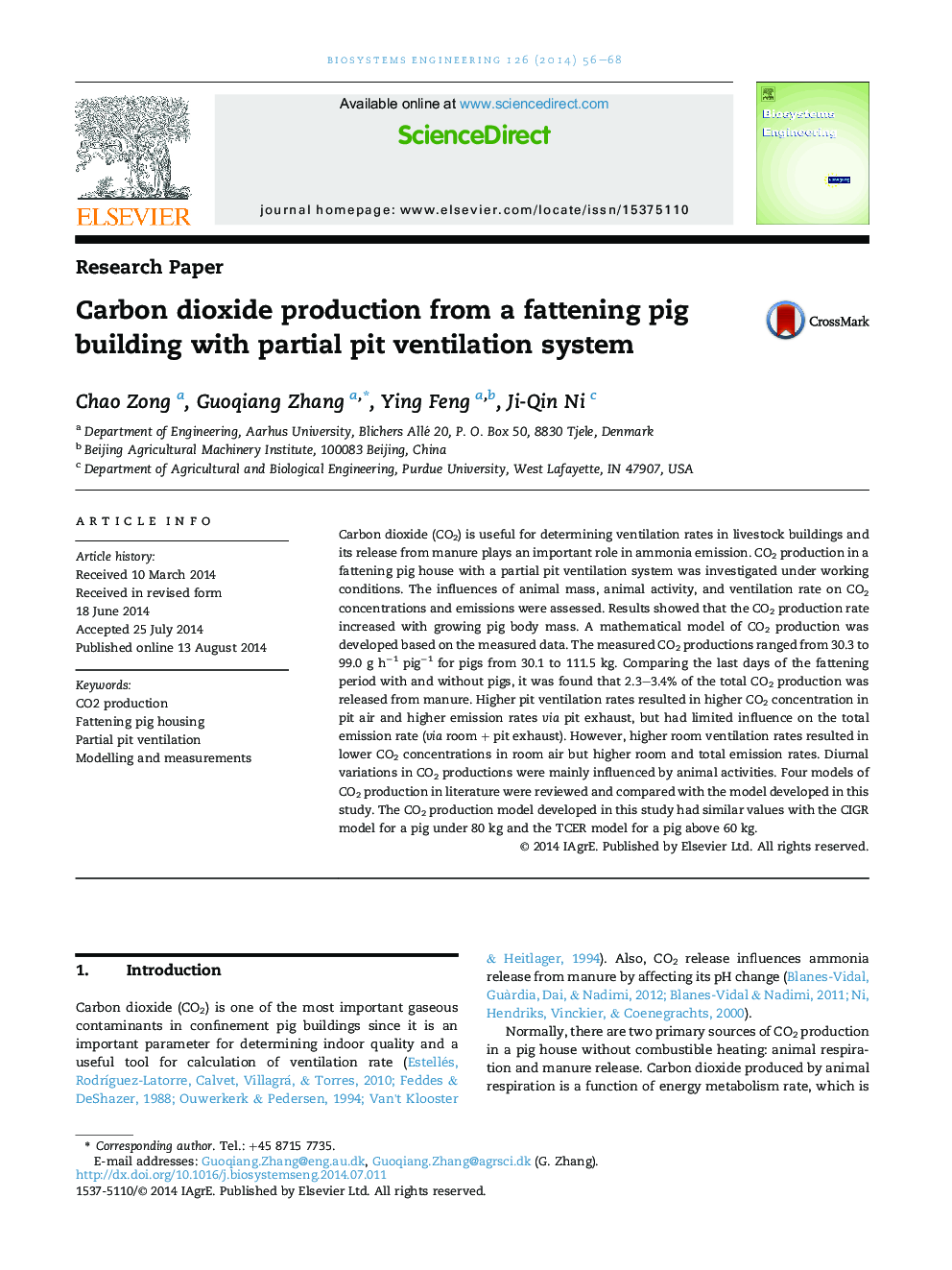| Article ID | Journal | Published Year | Pages | File Type |
|---|---|---|---|---|
| 1711133 | Biosystems Engineering | 2014 | 13 Pages |
•The CO2 production from fattening pig housing with partial pit ventilation.•CO2 from pig respiration and manure release were quantified by direct measurement.•Animal mass, activity and ventilation rate affect CO2 production.•A two-stage CO2 production model was developed based on measurement data.•The performance of the model is evaluated by comparison with previous studies.
Carbon dioxide (CO2) is useful for determining ventilation rates in livestock buildings and its release from manure plays an important role in ammonia emission. CO2 production in a fattening pig house with a partial pit ventilation system was investigated under working conditions. The influences of animal mass, animal activity, and ventilation rate on CO2 concentrations and emissions were assessed. Results showed that the CO2 production rate increased with growing pig body mass. A mathematical model of CO2 production was developed based on the measured data. The measured CO2 productions ranged from 30.3 to 99.0 g h−1 pig−1 for pigs from 30.1 to 111.5 kg. Comparing the last days of the fattening period with and without pigs, it was found that 2.3–3.4% of the total CO2 production was released from manure. Higher pit ventilation rates resulted in higher CO2 concentration in pit air and higher emission rates via pit exhaust, but had limited influence on the total emission rate (via room + pit exhaust). However, higher room ventilation rates resulted in lower CO2 concentrations in room air but higher room and total emission rates. Diurnal variations in CO2 productions were mainly influenced by animal activities. Four models of CO2 production in literature were reviewed and compared with the model developed in this study. The CO2 production model developed in this study had similar values with the CIGR model for a pig under 80 kg and the TCER model for a pig above 60 kg.
